Extraordinary Desert Plants That Grow in the Harshest Environments
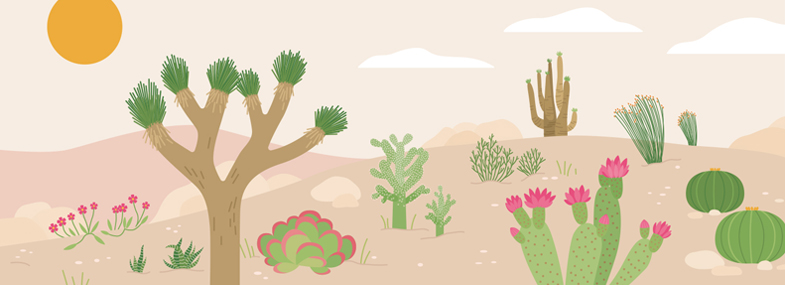
The desert is not the first place that comes to mind when we think about the best environment for plant life. Dry, dusty, and scorching hot, with temperatures that can reach as high as 70.7 degrees Celsius and some areas going decades without any rainfall, deserts seem to stand against everything that we know plants need to grow and thrive. But, desert plants exist!
For some unique plants, the desert provides the perfect conditions for them to live their best life. Of course, we all know about the cactus. However, have other plants been able to adapt to the desert’s harsh and seemingly unforgiving conditions? The answer is a resounding yes! The desert is teeming with healthy, vibrant plants.
Let’s take a look at some of these intriguing and slightly oddball plants below. But first, before we go any further, let’s address the elephant in the room: polar deserts. Technically, the Arctic and Antarctica are also deserts. However for the purposes of this piece, we’re only going to take a look at non-polar deserts and the plants that call them home.
1. Queen Victoria Agave
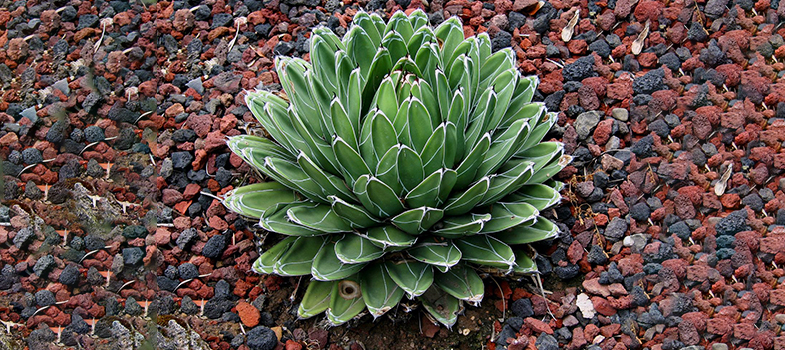
With its perfectly arranged foliage that resembles a royal crown, it is easy to see the inspiration for the Queen Victoria Agave’s regal moniker. This succulent is found in the Chihuahuan Desert in Northern Mexico, and it has thick, solid leaves that help it store water in harsh desert conditions. The agave grows very slowly and can reach approximately 30 cm high and about 30 – 60 cm wide. It can live between 10 to 20 years, some even make it to 50 years, and it is only, tragically, during the last few weeks of its life that it finally blooms. The bloom lasts between two to six weeks, producing a flower-covered stalk that grows as high as 4.6 metres, after which the agave finally dies.
2. Living Stone Plant: Desert Plant from the South
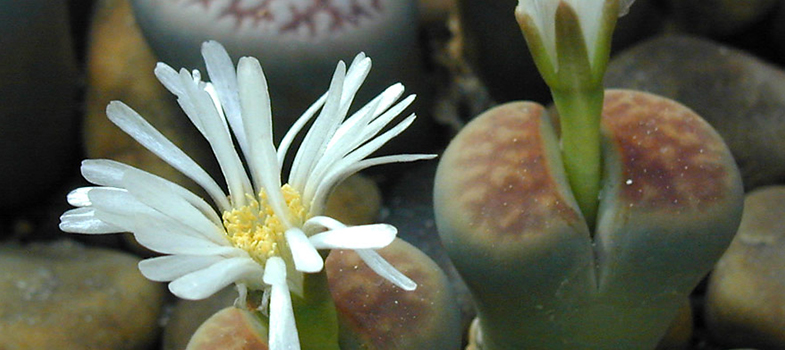
You would be forgiven for walking straight past this plant thinking that it was simply a rock. But these remarkable-looking succulents, also known as lithops, are plants that are endemic to the southern Namib Desert, which cuts across the countries of Namibia, South Africa, and Angola. This means that they do not naturally exist anywhere else in the world. Living stones come in a range of colours, which vary depending on the environment and climate, and they rely heavily on nature to reproduce. First, in order to release their seed, they need the rain to fall on them and push the seeds out and then, after that, they wait patiently for insects to pollinate them. Lithops store a lot of water in their bodies and can go several months without needing any moisture. As a result of their slow-growing nature, they can live up to 50 years.
3. The Joshua Tree (Yucca Brevifolia)
Growing only in the Mojave Desert, the Joshua Tree is actually a plant that is part of the Yucca family. Not to be confused with the yuca, which is also known as cassava. The Joshua Tree is named after the biblical figure, Joshua. Named by travelling Mormons who thought that the tree’s limb-like branches looked like Joshua. Specifically when he raised his arms upwards to Heaven while praying for guidance to the Promised Land. Known to live as long as 150 years, Joshua trees can grow up to 12 metres tall. Soon after it matures, which can take between 50 to 60 years, it produces oval-shaped edible fruit. This fruit is about 2 to 4 inches in size that is sweet and filled with seeds.
4. Broad-leaved Parakeelya
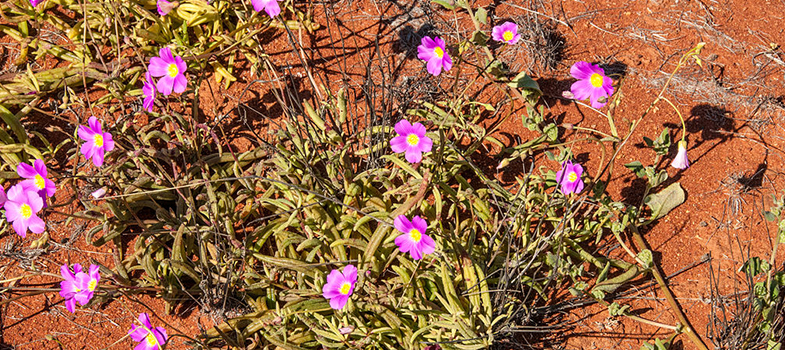
Belonging to one of the few plant species that are endemic to Australia, this succulent was given the common name Parakeelya by the Aboriginal people hundreds of years ago for whom the roots, leaves, stem, and sometimes seeds of the Parakeelya were a source of food, water, and nutritional minerals. It is charming in appearance, and with its bright pink petals and yellow centre, it looks exactly like the typical drawing of a flower that children make. Blooming between May and November, the Parakeelya also has the distinction of being one of the rare succulents that occur naturally in Australia, as the country’s climate isn’t ideal for the growth of succulents in general.
5. Mother of Pearl
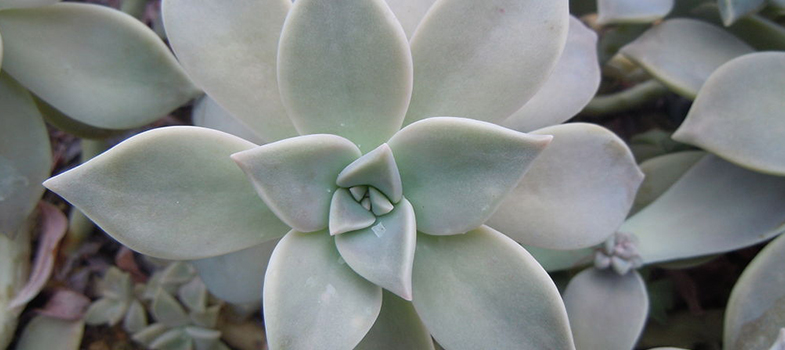
A hardy succulent that is native to Mexico, the Mother of Pearl has thick greyish-white leaves that grow in a lovely rosette shape. Due to its colour changing properties, the Mother of Pearl could actually look like a different plant depending on where it grows. If it spends time in the shade, then it maintains its greyish-white colour, but if it receives the sun’s full glare, then it takes on a light pink-yellow colour. The Mother of Pearl is an easygoing, sprawling plant that can sprout from any of its leaves and can grow to a height of 30 cm. It looks good in all environments and is very easy to care for. You can get one for your home from Flowers Across Melbourne.
6. Zebra Cactus

One of the most popular succulents among ornamental plant enthusiasts, the Zebra cactus has a chic look with thick leaves that grow in an elegant upward curvature towards its centre. The leaves come in green or reddish-purple colour and have striking white horizontal marks from top to bottom like those on Zebras. The Zebra cactus is native to southern Africa and doesn’t grow very tall, only between 10 cm to 20 cm. They bloom after 3 to 5 years through a long, thin stalk that grows from the centre of the plant that produces flowers. When exposed to a lot of direct sunlight the Zebra cactus’s leaves will start turning red; however, it can live and flower for several decades.
7. Burro’s Tail
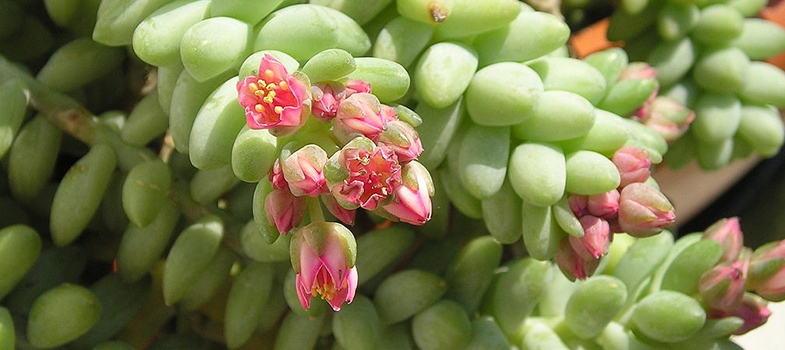
Dripping with leaves that look like mouthwatering pointy green grapes, the Burro’s Tail is a succulent that is native to Mexico and Honduras. The leaves of the Burro’s Tail, which is where the plant stores its water, are overt indicators of its health. If the leaves are thick and plump, then that means that it has enough water. But if the leaves are withered, it means that the succulent is dry. Known to be temperamental when it comes to flowering, the Burro’s Tail produces small, deep pink flowers at the end of its stems when it chooses to.
The flowers appear when the stems reach lengths of 25cm or 30 cm, which is generally the full stem length for most Burro’s Tails; however, there have been reports of some stems growing to 2.7 metres long. As a whole, the Burro’s Tail reproduces quickly and easily – all it takes is to plant one of its plentiful leaves in the ground.
8. Paddle Plant
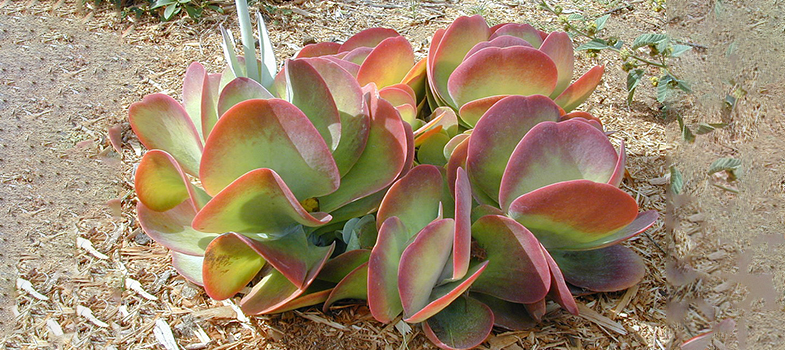
Also known as the Red Pancake and the Desert Cabbage, it is easy to picture the paddle plant from its nicknames. With dark green foliage shaped like a cabbage, its edges tinted a deep red, and leaves as flat as the aforementioned pancake, the home of the Paddle Plant is southern Africa, specifically Eswatini and South Africa. Its leaves grow progressively redder the more time it spends in the direct sun. The flowering of this plant is quite magnificent as it gradually shoots a thick, graceful stalk about 1 metre high into the air from its middle. Uniformly spaced leaves that produce dense clusters of pale green or yellow flowers dress the entire length of the stalk. The paddle plant also possesses medicinal value and the Xhosa people use it to treat earaches and colds.
9. Teddy Bear Cholla
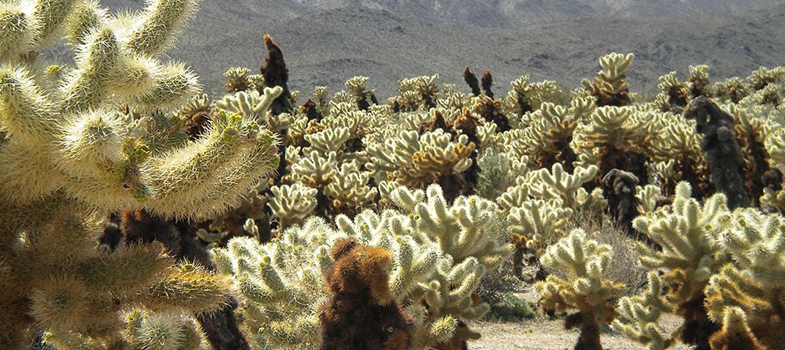
Never has a name so brazenly misrepresented the true nature of its bearer. Although it appears furry from a distance, the Teddy Bear Cholla, also known as the Jumping Cholla, is definitely not soft or cuddly and, in fact, can leave you with a body full of painful cactus spines just from walking past it. Native to the Sonoran Desert, the joints of this cactus “jump” from the parent plant onto any person or animal that walks too close to it or is nearby when there’s a strong wind.
The spines on the joints are hard and sharp and are capable of penetrating boots and tyres. The joints, which measure about 25 cm long and 4cm wide, don’t actually jump, but because they are so loosely attached to the parent plant, they easily disconnect at the slightest disturbance. Armed with a fierce protection mechanism and the ability to reproduce simply via any of its joints falling to the ground, it is clear that the Jumping Cholla has been designed to thrive and dominate its environment.
10. Crassula Buddha’s Temple
The meticulous and intricate structure of this plant could rival the designs of the most accomplished architect. Its thick succulent leaves grow on top of each other from four different directions and they curve upwards at the edges until they eventually touch each other at the top of what can only be described as a magnificent plant skyscraper. The Crassula Buddha’s Temple can grow to a height of 15cm and produces a lovely bouquet of white or pink flowers from its centre that sit at its summit.
11. Beavertail Cactus
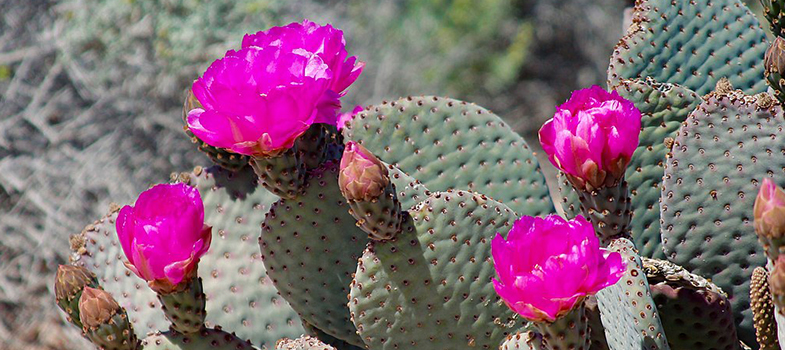
Growing low on the ground, the Beavertail Cactus is a sturdy plant that originally grows in the Mojave and Colorado Deserts. Its other name, the Beavertail Prickly Pear, comes from the shape of its pads, which are large and flat, much like the tail of a beaver. The Beavertail Cactus doesn’t have spines like other prickly pears, but it has bristles that, although not as dangerous, can still do harm. It can grow up to 30cm, and it produces large, bright red flowers that make it very easy to spot.
12. Allium Rothii
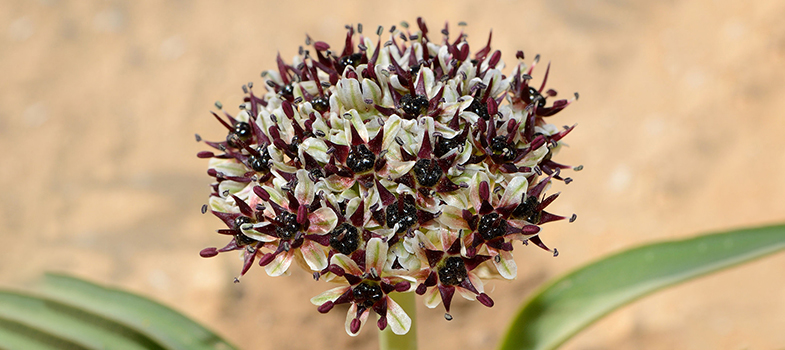
A gem found in the stark Negev and Gobi Deserts, the Allium Rothii is striking in an understated but unique way. Growing in parts of Palestine, Israel, Iran, Afghanistan, and much of Central Asia, this plant produces deep purple, almost black, bulb flowers that are interspersed with white segments. The bulbs grow to 3cm wide and are replaced by new bulbs every two years. The Allium Rothii is classified as a geophyte, which means that it keeps its water and energy storage systems underground to protect it from the desert heat.
13. Baseball Plant (Euphorbia Obesa)
As the (slightly modified) saying goes, the Baseball plant looks exactly like what it says on the tin: a big, round baseball. With evenly spaced vertical ridges and grooves dividing the outer layer of the plant into V-shaped sections, the Baseball plant has a dark grey-green exterior and grows to about 10cm-15cm wide. It starts off spherical and becomes more cylindrical as it grows and can reach heights of 20cm. They grow flat on the earth and slowly; therefore, they have long lifespans. Due to its uniqueness, the Baseball Plant is very popular as an ornamental plant and, therefore, is endangered in its indigenous habitat in the Great Karoo region of South Africa.
14. Desert Five-Spot
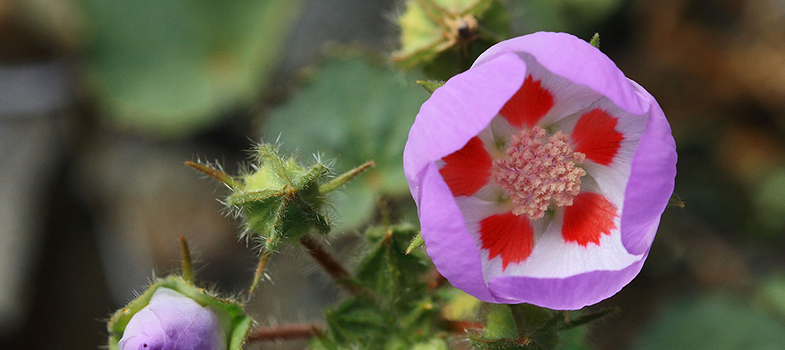
This is a stunning plant that invites you to move in closer to fully its exquisite beauty and design. With wide, dark green foliage and a somewhat solid branching stem, it may initially look like a nondescript desert plant. However, wait until it flowers. Blooming from March to May in the Sonoran and the Mojave Desert, each side-shoot produces only one flower bud with delicate purple petals that curl slightly inward. And what is amazing is that inside every single flower, there are five dark red dots arranged in a circle. And, furthermore, each flower, without exception, has exactly five petals! The precision and consistency are pretty mind-blowing.
15. Pencil Plant
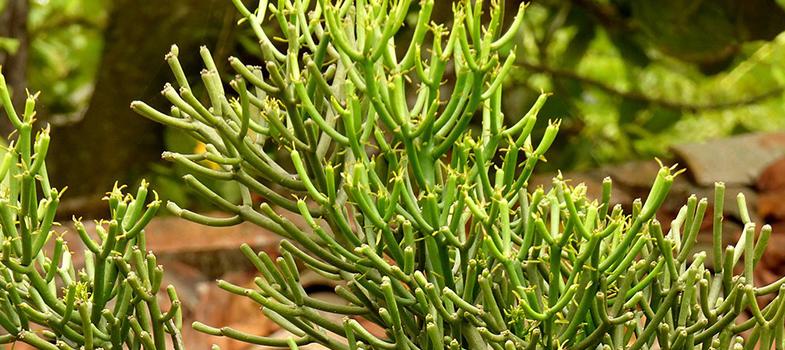
Although it is also known as the Pencil Cactus, the Pencil Plant is actually a succulent and not a cactus. What is the difference, you ask? All cacti are succulents, meaning they have thick, fleshy leaves or stems that enables them to store water; however, not all succulents are cacti. The essential identifier of a cactus is the presence of areoles, which are small bumps on the body of the cacti from which pointy spikes and needles grow.
However, given the Pencil Plant’s pointy branches and shape, you can see why it may have initially been mistaken for a cactus. It is native to eastern and southern Africa and can grow up to 9 metres in its natural habitat, producing a bloom of yellow flowers at the ends of its branches upon maturity. Be careful when handling it though. Its sap is reported to be quite toxic and can cause allergic reactions.
16. Golden Barrel Cactus (Golden Ball Cactus)
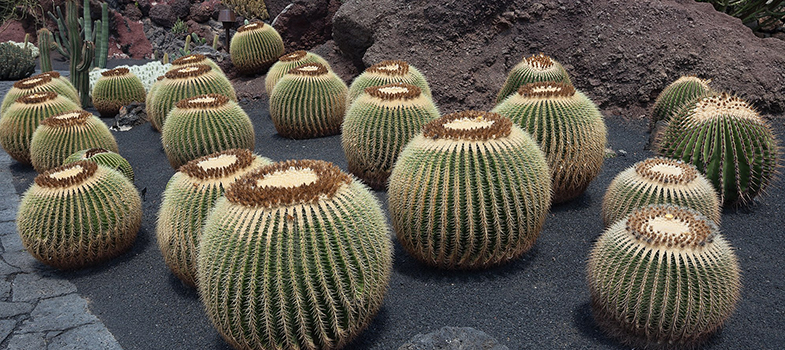
The Golden Barrel Cactus is an adorable spherical plant with a rather mischievous nickname: the mother-in-law’s cushion. Likely to induce a giggle or two, this nickname comes from the countless sharp yellow spines that envelop every single inch of the cactus to make it look like a pincushion. Endemic to central Mexico, the Golden Barrel Cactus is a favourite among ornamental plant enthusiasts. It is a slow-growing plant that matures at around 20 years old, at which point it produces small yellow leaves at the top of the cactus head.
17. Hydnora
Looking and smelling like something straight out of a horror movie, the Hydnora is one of the desert plants that grows in Madagascar, Ethiopia, and the Arabian Peninsula, which includes the countries of Kuwait, Oman, Qatar, Saudi Arabia, the (UAE), and Yemen. It has a distinctly non-plant look with a deep red body and no leaves, and it is reported to emit a foul odour that lures insects for pollination. The lack of any greenery on the Hydnora means that it doesn’t depend on the sun to grow like most other plants; instead, it first germinates underground and grows by stealing all of its nutrients from a nearby Euphorbia plant. And then, once it is ready to reproduce, it bursts out onto the surface of the ground. This plant must have totally been the inspiration for the movie Alien.
18. Tumboa Plant (Welwitschia Mirabilis)
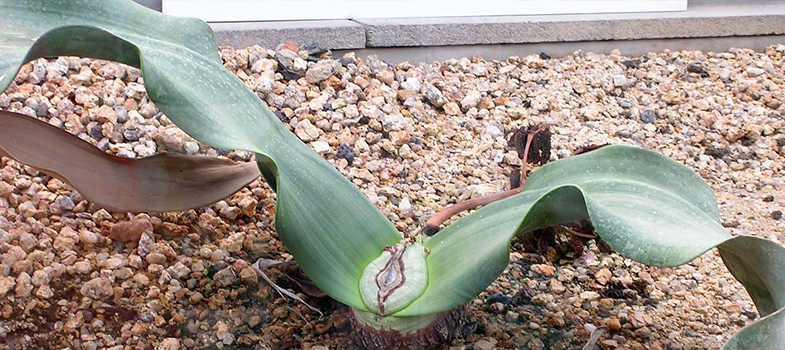
Less scary-looking than the Hydnora, but no less fascinating is the Tumboa Plant, which is endemic to the Namib Desert. This species is unique in many ways. First, it only produces two leaves throughout its entire lifetime. These leaves are permanent and, unlike with other plants, they never fall off. Over the course of the Tumboa plant existence, each of its leaves can grow up to 4 metres long. Carbon dating has shown that the Tumboa Plant has an average lifespan of 500 to 600 years, with some large species thought to even be almost 2,000 years old. This is not surprising given that the Namib itself, estimated to be about 55 million years old, is the oldest desert in the world.
19. Sunburst Plant
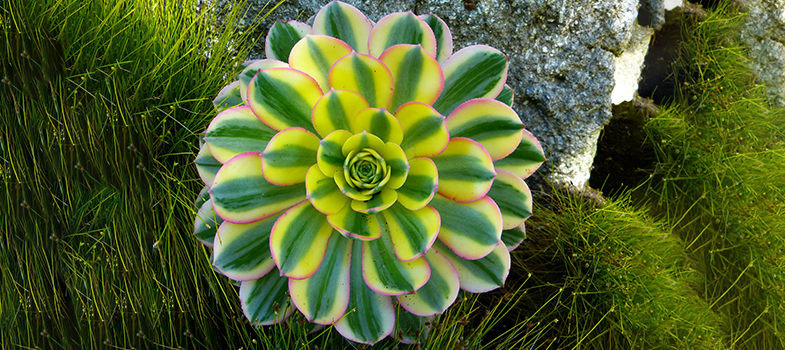
Everything about this succulent radiates joy! With bright green and yellow leaves that have a light pink margin on their ends, the Sunburst Plant can pretty much brighten up any mood or figurative room that it enters. Originating in northern Africa, this ray of sunshine grows in a lovely rosette formation and can reach a width of 90 cm wide and a height of 60 cm. Like most succulents, the Sunburst Plant produces a flower spike from its centre upon maturation along which pale yellow flowers grow.
20. Whitestem Paperflower
Don’t let its delicate-sounding name fool you; the Whitestem Paperflower is a sturdy and resilient plant native to the Sonoran Desert in the United States. It gets its name from the fact that its bright, yellow flowers eventually become papery after a few months of blooming. However, this process takes a while because the blooming lasts for much of the year. They can grow as high and wide as 90 cm.
21. Ocotillo (Fouquieria Splendens)
Disguised as a collection of dull, inconspicuous sticks during dry spells in the desert, the Ocotillo eagerly produces leaves under rainfall, and it releases a bloom of bright red, eye-catching tubular flowers from March to June. Although photographs don’t really capture the brightness of its flowers, they are so bright that they were given the common name “little torches” or Ocotillo in Spanish. Found in the Sonoran Desert, the Ocotillo can grow up to 10 metres high and live as long as 200 years.
22. Jade Plant (Crassula Ovata)
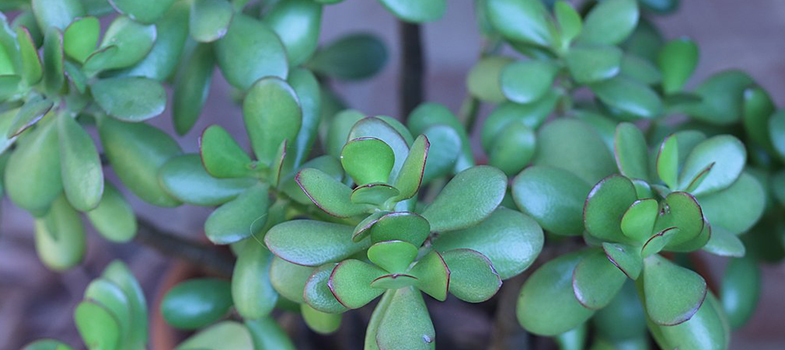
In some Asian countries, the Jade Plant is also known as the Money Plant or Friendship Tree because its thick, shiny green foliage is thought to represent growth and the shape of its leaves, which look like jade coins, are believed to symbolise wealth. When it blooms, it produces sweet-smelling white flowers that are shaped like stars from the ends of its thick branches. Native to South Africa and parts of Mozambique and Eswatini, the Jade Plant grows slowly and can reach heights of 45 cm. It has a long lifespan, with some researchers approximating that it can even live for 100 years.
23. Mojave Poppy

Bearing bright yellow flowers from March to May, the Mojave Poppy is also known as the Desert Golden Poppy due to its eye-catching colour. It is a lovely bright spark in the otherwise muted hues of the Colorado, Mojave and Sonoran deserts where it is found. The Mojave Poppy stores its water in cute little bulbous leaves that gather at the bottom end of the plant. Its cup-shaped flowers grow on thin green stems that reach about 25 cm tall. Each stem carries only a single precious flower.
24. Sturts Pigface (Gunniopsis Quadrifida)
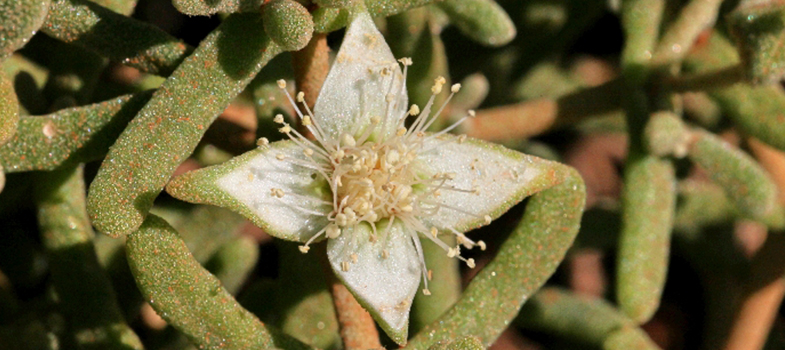
This succulent makes up for its rather unfortunate common name with its glittery lime green leaves and cheerful star-shaped white flowers that bloom in August. Found in the Simpson Desert in Australia, the Sturts Pigface adds beautiful colour to this dry and plain red expanse. This unassuming plant can grow up to 1 metre high and is a much-needed source of water, food, and shelter for desert animals.
25. Goat’s Horn Cactus
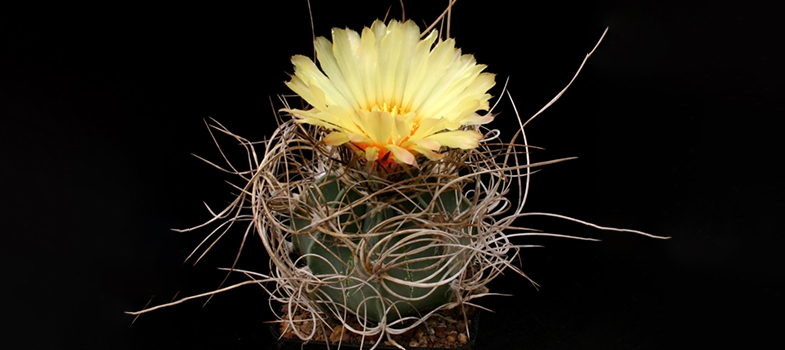
Unlike most cacti, the Goat’s Horn Cactus doesn’t appear to have a clear defence system in place. Deriving its name from the long gangly spines that grow mostly at its apex, at first glance, these spines don’t seem to offer much by way of protection from predators. However, the Goat’s Horn Cactus is actually a pacifist plant. The real purpose of these spines is to serve as grass-coloured camouflage instead of to aggressively keep herbivores at bay. Originating in the Chihuahuan Desert in Mexico, the Goat’s Horn Cactus can grow to a height of 40 cm, but it readily produces big, beautiful flowers once it reaches a mere 5cm.
26. Andamooka Lily (Crinum Flaccidum)
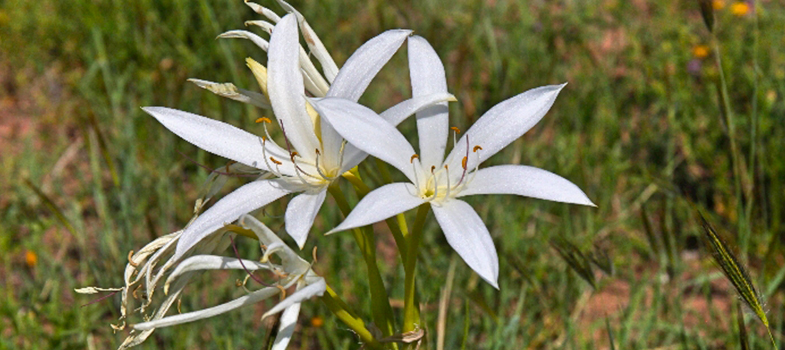
Beautiful to look at, the Andamooka Lily looks quite out of place in the stark environment of the Australian desert. The lily usually emerges from the ground in the aftermath of heavy, drenching rains and the bulbs of its flowers, which can either be a soft yellow or white depending on where in the country it grows, open up to form a star shape. However, the delicate and harmless exterior of this lily belies a rather potent secret weapon. Also known as the Stink Lily, the Andamooka Lily emits a foul odour, especially in the evenings.
27. Red Goyo (Cynomorium Songaricum Ruprecht)
Growing in the Tengger Desert and Badain Jaran Desert of northern China, the Red Goyo is an unusual looking plant that the Chinese have used as medicine for decades. It has no leaves and is a deep red-purple colour; therefore, it doesn’t get its sustenance from the sun but rather from the roots of a host plant. Similar to the Hydnora Arabica, the Red Goyo first grows underground before emerging onto the surface when it’s ready to reproduce. Traditional healers use it for treating kidney dysfunction, impotence, backache, and fatigue.
28. Elephant’s Trunk Plant (Pachypodium Namaquanum)
With a passing resemblance to the Joshua Tree, the Elephant’s Trunk also looks like a tree but is, in fact, a plant. Endemic to the richest succulent zone in the world, the Karoo Desert of southern Africa, this succulent gets its name from its super stout stem. The single stems can grow to a thickness of almost 25 cm and occasionally develop branches that angle upwards. Wavy leaves grow in rosette formation from the tops of the branches, and upon maturation, the plant produces flowers from July to September. The Elephant’s Trunk can reach heights of 2.5 metres – with a few growing to a whopping 5 metres – and they can live for more than 100 years.
29. Saguaro Cactus
The hardest working cactus in show business, the Saguaro Cactus is that cactus you see in almost all Westerns or Hollywood movies that involve the desert. And you can see why. Casting a dramatic silhouette against the vast desert sky, the Saguaro conjures images of barrenness, peril, and isolation. Found only in the Sonoran Desert, the Saguaro is the largest cactus in the United States and can grow up to 12 metres tall. Full of water, a large Saguaro can weigh 6 tons. It grows very slowly and lives for more than 200 years. Once it matures, which happens when it’s about 70 years old, the Saguaro Cactus produces white flowers from around April to June.
30. Spiralled Cactus

This plant is simply exquisite to behold. There are two main versions: the first starts spiralling when the cactus reaches 10 cm tall, and the second is a short stem variety where the spiralling starts from the very beginning. The origins of the Spiral Cactus are shrouded in mystery, with theories abounding on how it came to be. Some scientists believe it’s a hybrid clone of the Cereus Peruvianus; others presume that it’s derived from the Cereus Stenogonus, and yet others think it’s a mutant of the Cereus Forbesii. Depending on the variety, it may produce large white or deep pink flowers upon maturity and can reach a height of 4 metres.
31. Queen of the Night (Peniocereus Greggii)
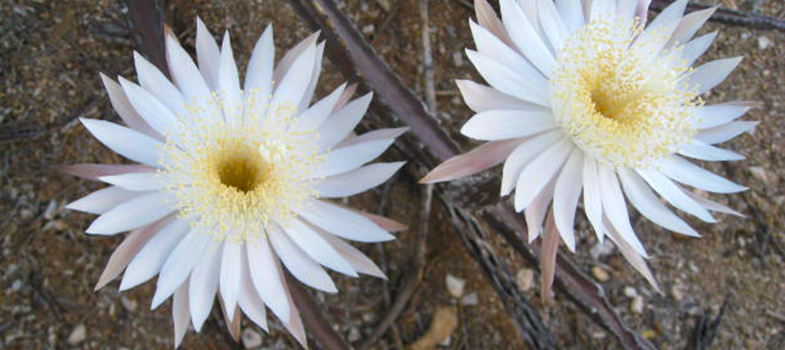
The Peniocereus Greggii is one of about a dozen intriguing cactus plants that bloom only at night. A lot of mystery surrounds the blooming patterns of these plants with their various characteristics being muddled up. Although the Epiphyllum Oxypetalum has the most dramatic story – thought to bloom only one night a year, with its petals enchantingly falling off just before dawn – it is a cactus that grows in the forest and not the desert. The Peniocereus Greggii, however, is native to the Sonoran Desert and its white flowers remain open the next day. It can grow to about 3 feet high and when it blooms, which occurs from May to July each year, it releases a sweet smell that attracts nocturnal insect pollinators, such as moths.
FAQ
Which Plants Do Not Grow In The Desert?
Plants like calatheas, hydrangeas, hibiscus, ficus, and giant taro cannot grow in the desert because they need a lot of moisture and shade. Additionally their leaves or stems are not designed to store water for long periods of time. Additionally, plants with large leaves tend to be found in more tropical areas. This is because they are over efficient at insulating themselves. Therefore, they can’t extract sufficient heat from their environment in freezing temperatures, which occur in deserts at night. Alternatively, they extract too much heat in extremely hot conditions, such as those of deserts in the daytime. Making them more susceptible to overheating.
How Often Should Desert Plants Be Watered?
Desert plants need more water in the summer compared to the winter. The best way to know whether your plant needs water is to check if its soil is wet or dry. You can measure the dryness of the soil by pushing a stick into the soil and checking whether it comes back wet or dry. If the soil is completely dry throughout, then it is time to water your plant.
It’s important to make sure that, when you water it, the water flows all the way through and out of the bottom of the pot. If your pot sits on a saucer, empty the water that trickles out onto the saucer to prevent your plant from drawing up excess water. In the winter months, most plants, including desert succulents and cacti, stop growing; therefore, they need less water. For desert plants it is recommended that you water them about once a month in the winter.
Cacti that aren’t receiving enough water look pale, and those that receive too much water look overly plump. For succulents, their leaves become shrivelled when they are underwatered and when overwatered, the leaves become soft and mushy.
Where Do Most Desert Plants Come From?
The deserts of southern Africa, Mexico, and the United States have the widest varieties of desert plants and flora. The increased biodiversity in these areas is due to more predictable seasonal rains and milder temperatures in the summer.
Closing
While deserts don’t take home any prizes for hospitality, it’s incredible to see the wide variety of plant life that not only survives but also blossoms and prospers there.
As a result of the harsh conditions in which they live, one of the traits that desert plants have in common is a long lifespan. For self-preservation purposes, desert plants are biologically designed to grow slowly, conserve sufficient water and energy to endure significant dry spells, and protect themselves in an assortment of ways.
These qualities make many desert plants perfect houseplants, as they are easy to care for, drought-tolerant, and generally long living. Succulents can add a touch of elegance and colour to your home when nestled in a bauble or a vine-dorned glass cube, or potted in a simple cement pot.
Check out Flowers Across Melbourne to get a beautifully potted plant delivered to you today.
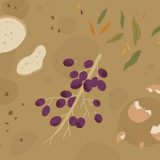

Comments are closed.